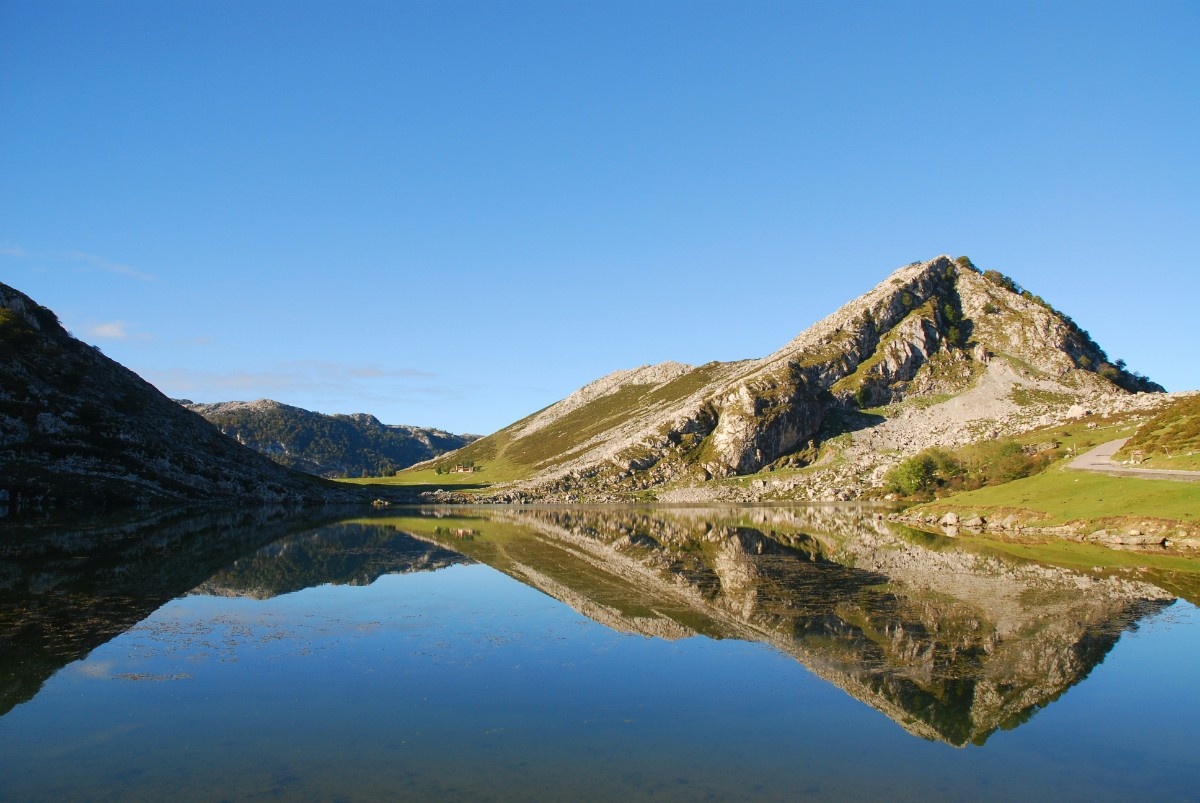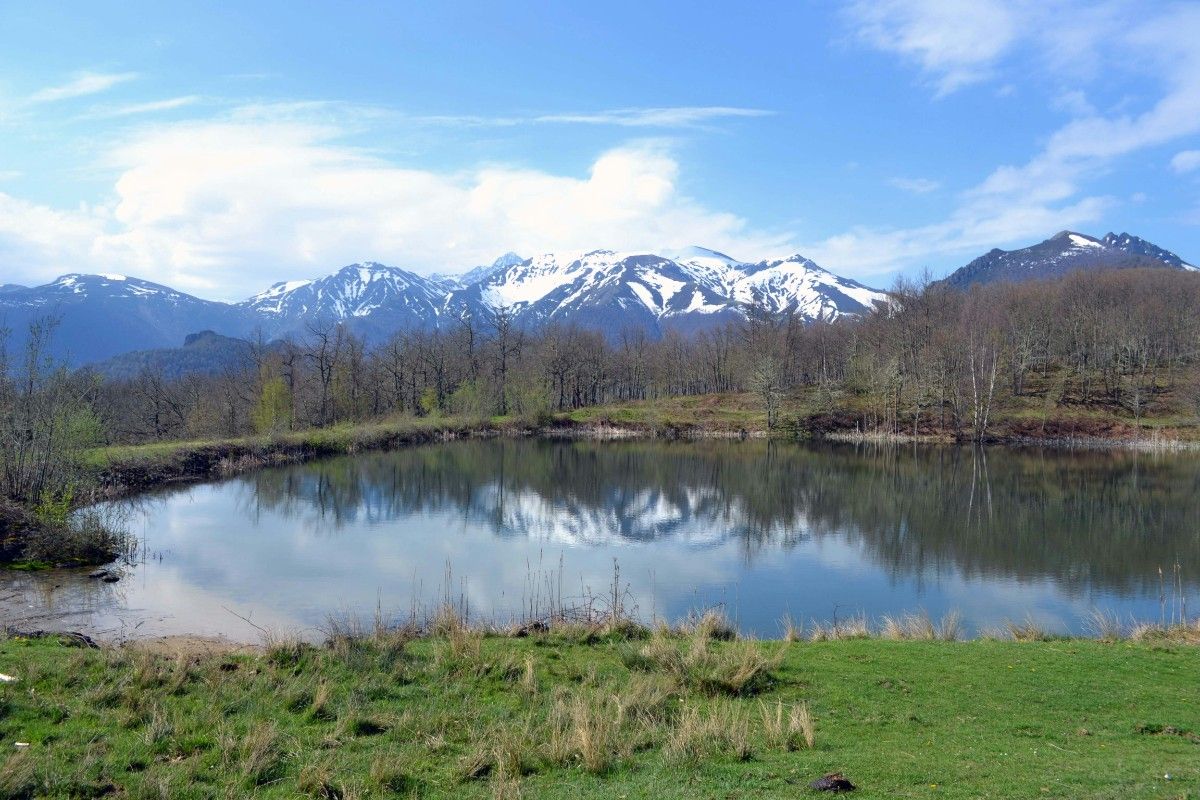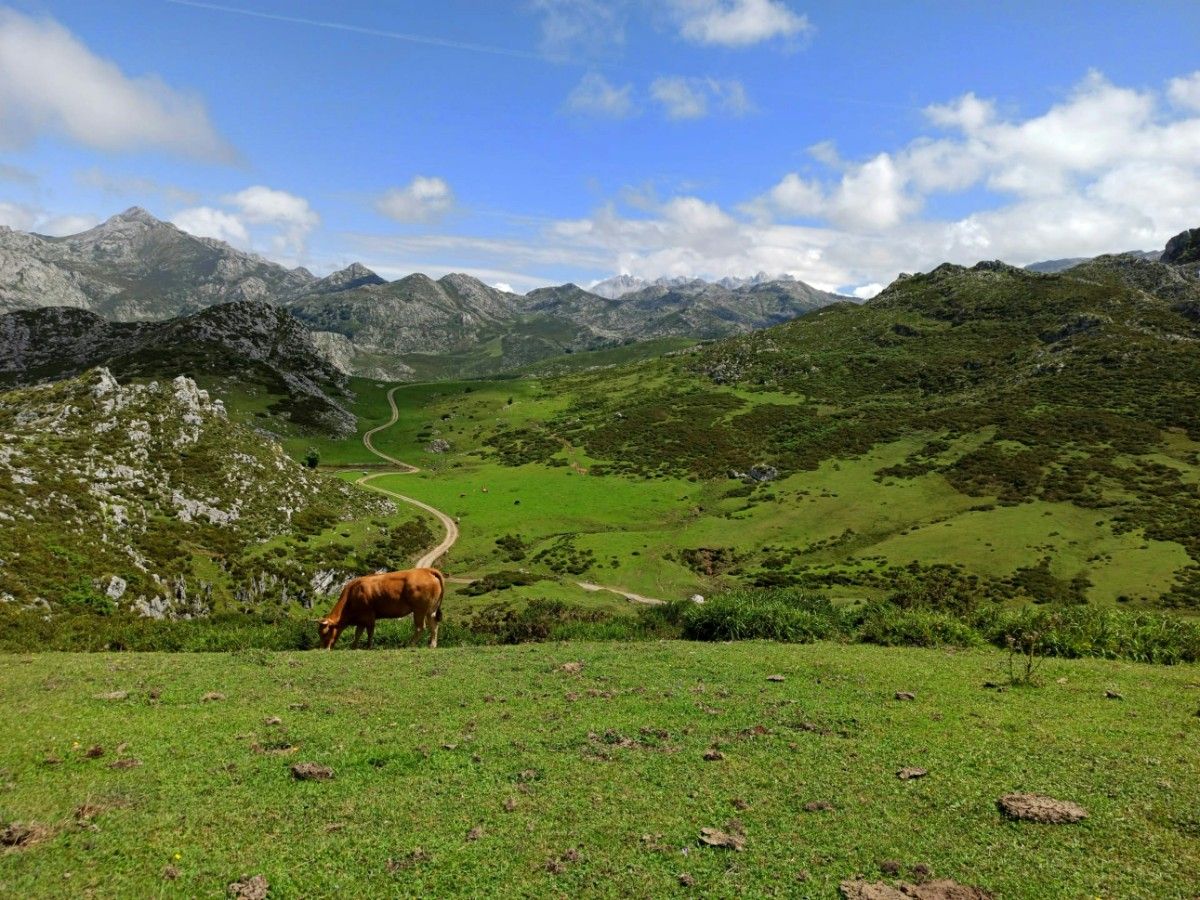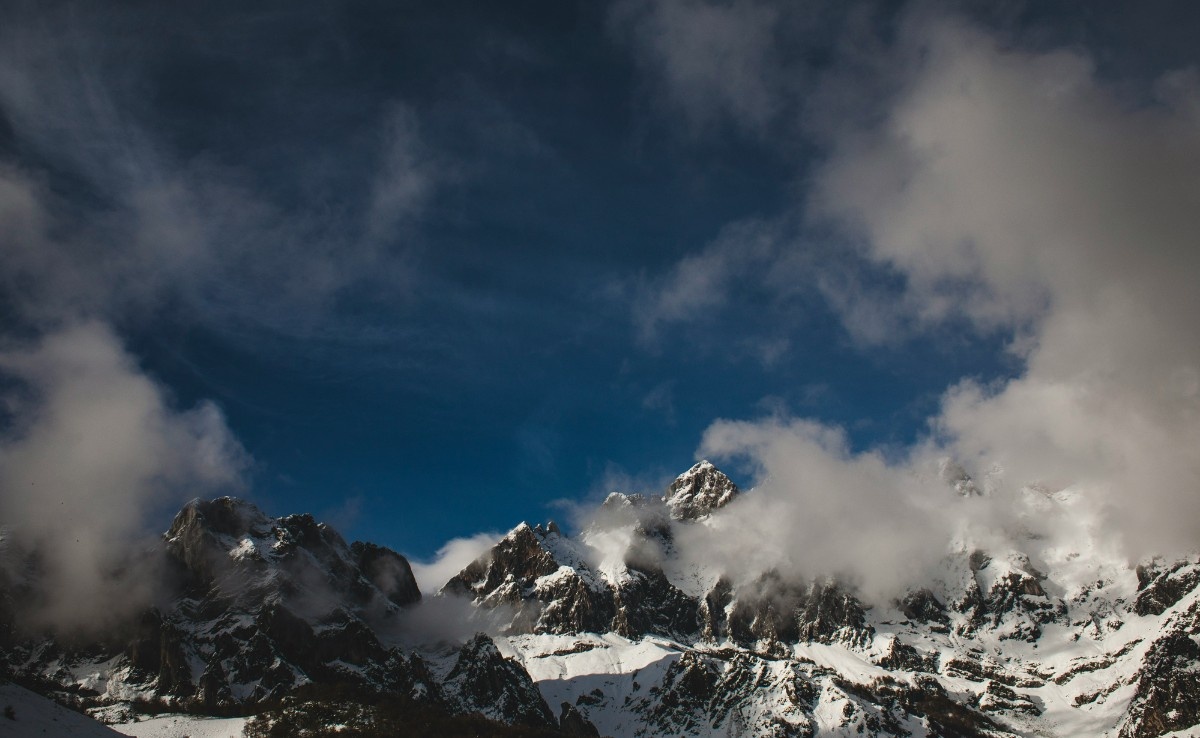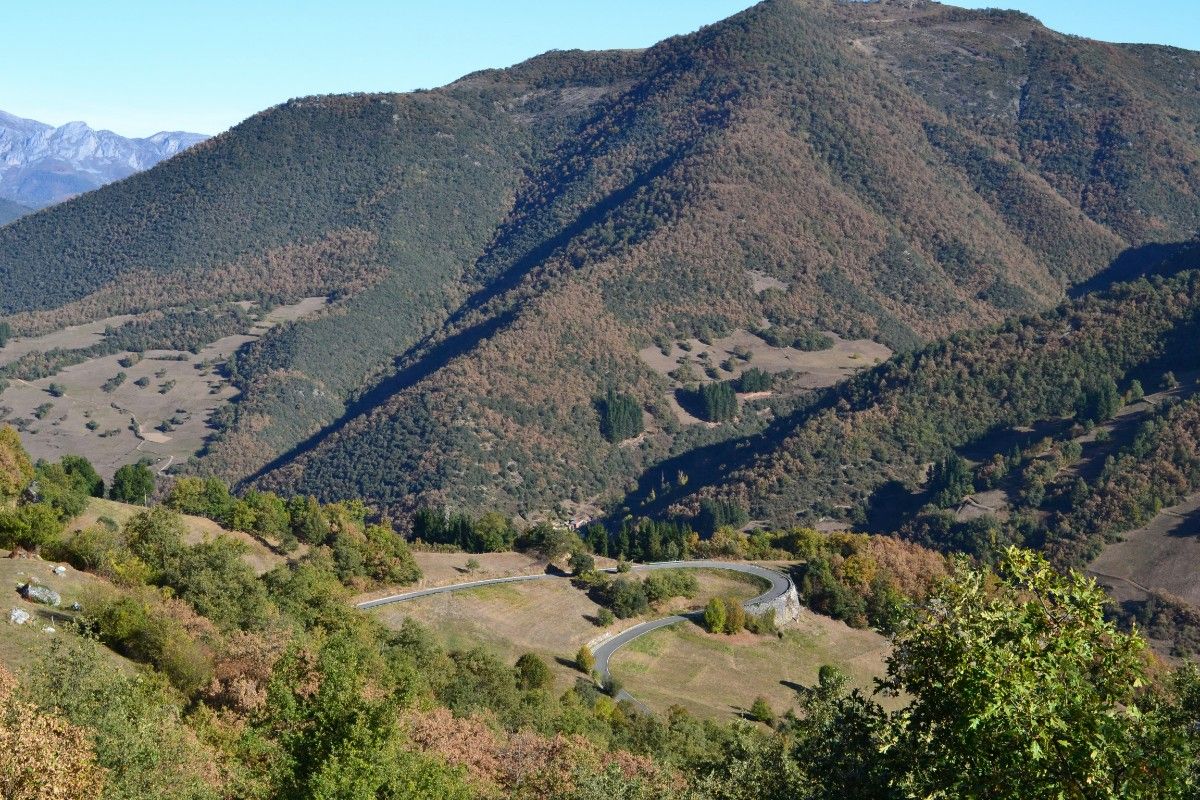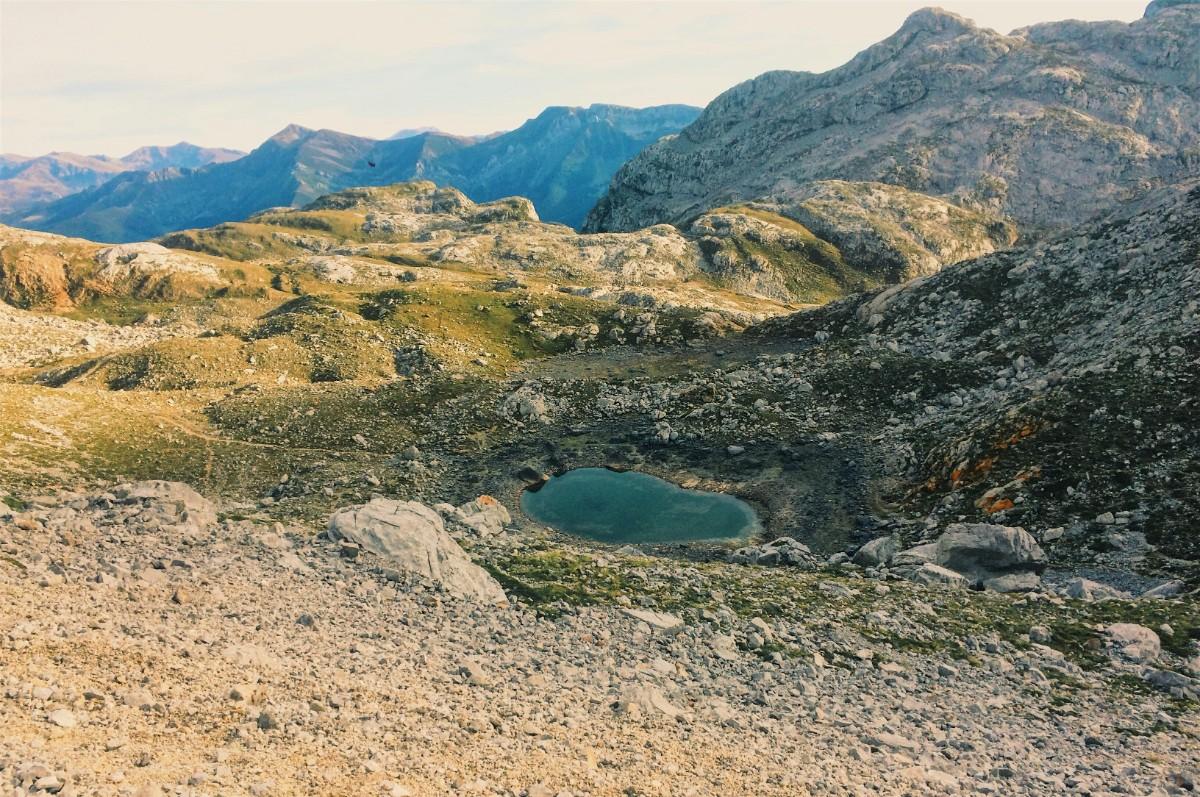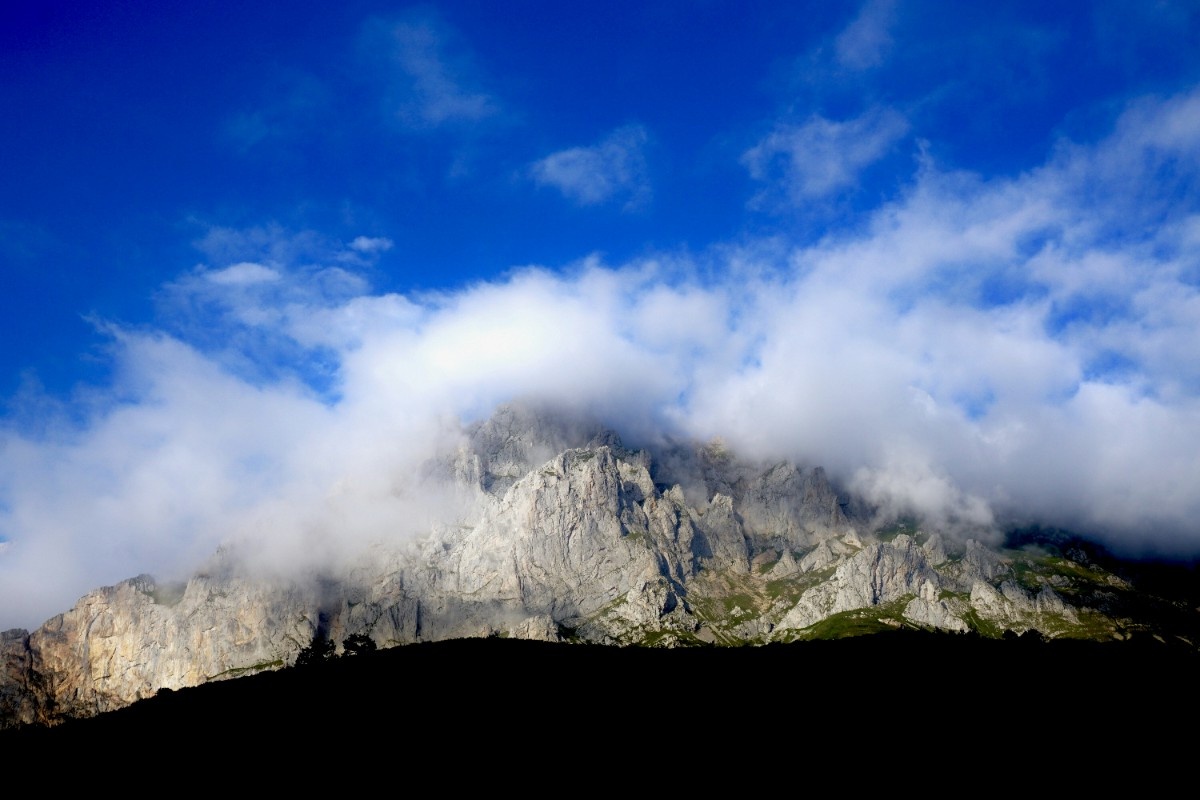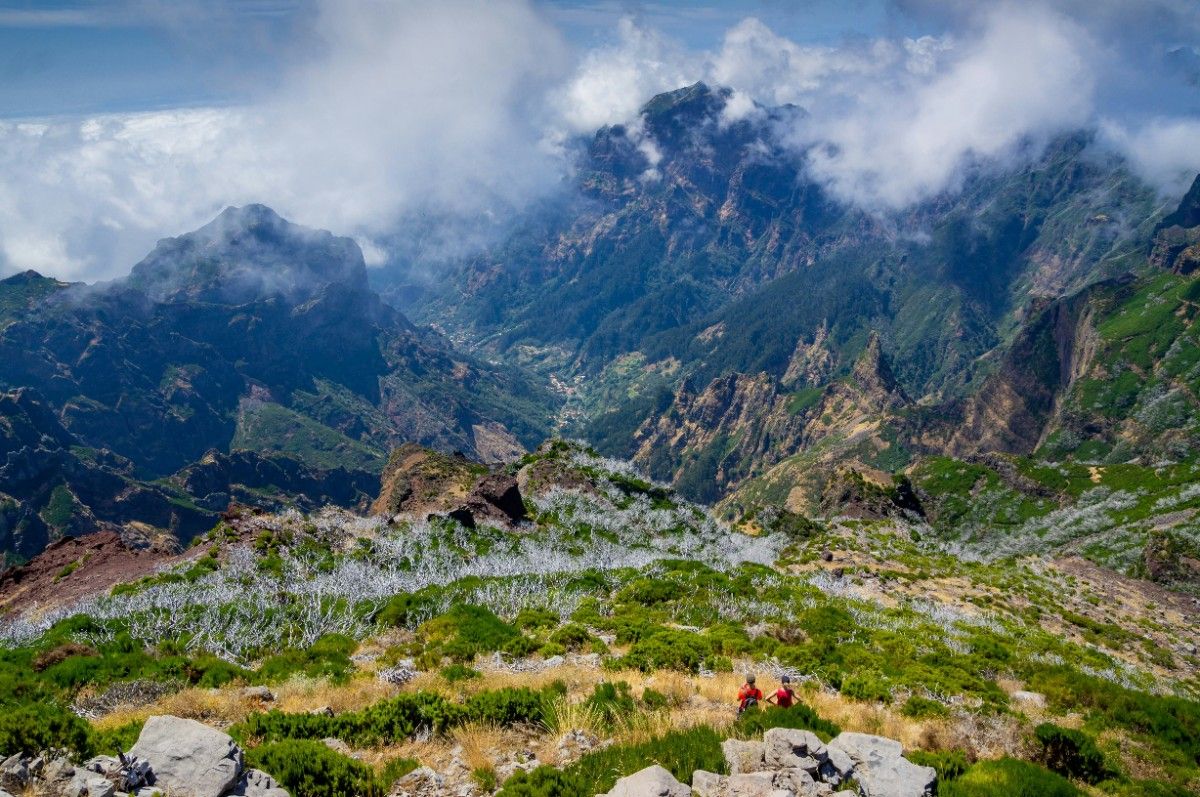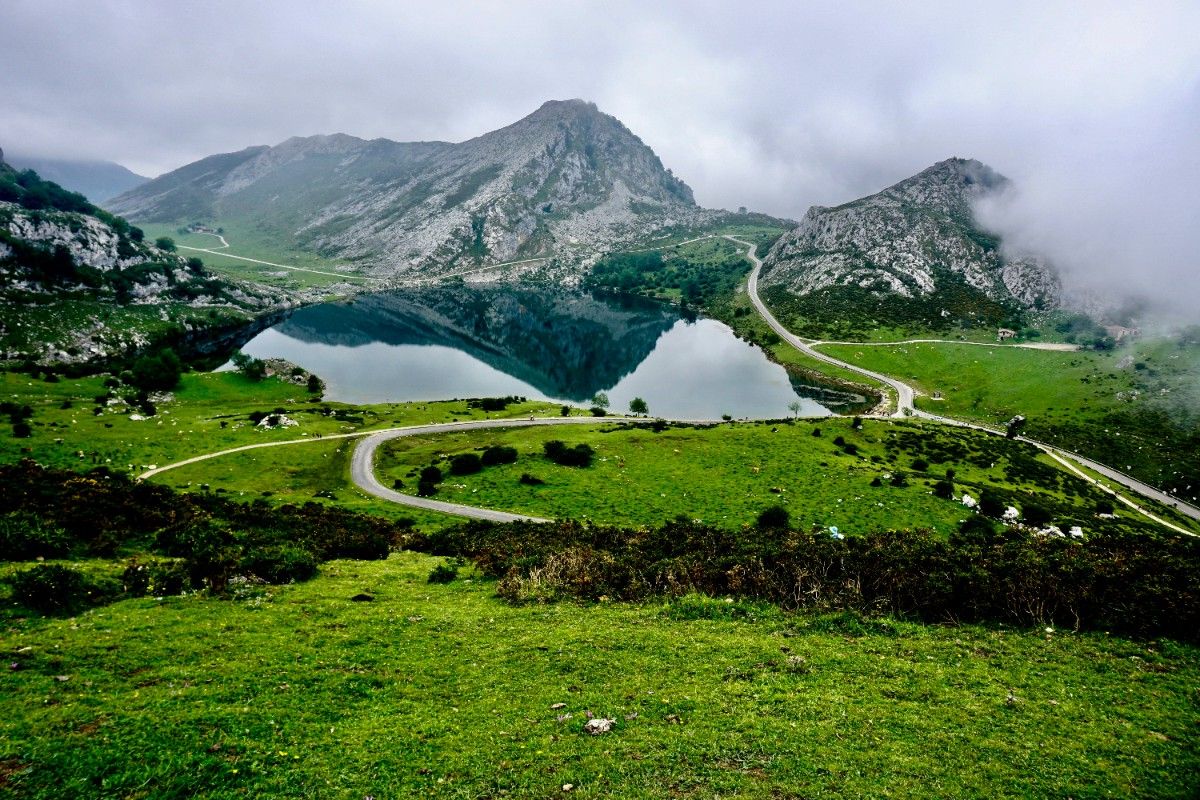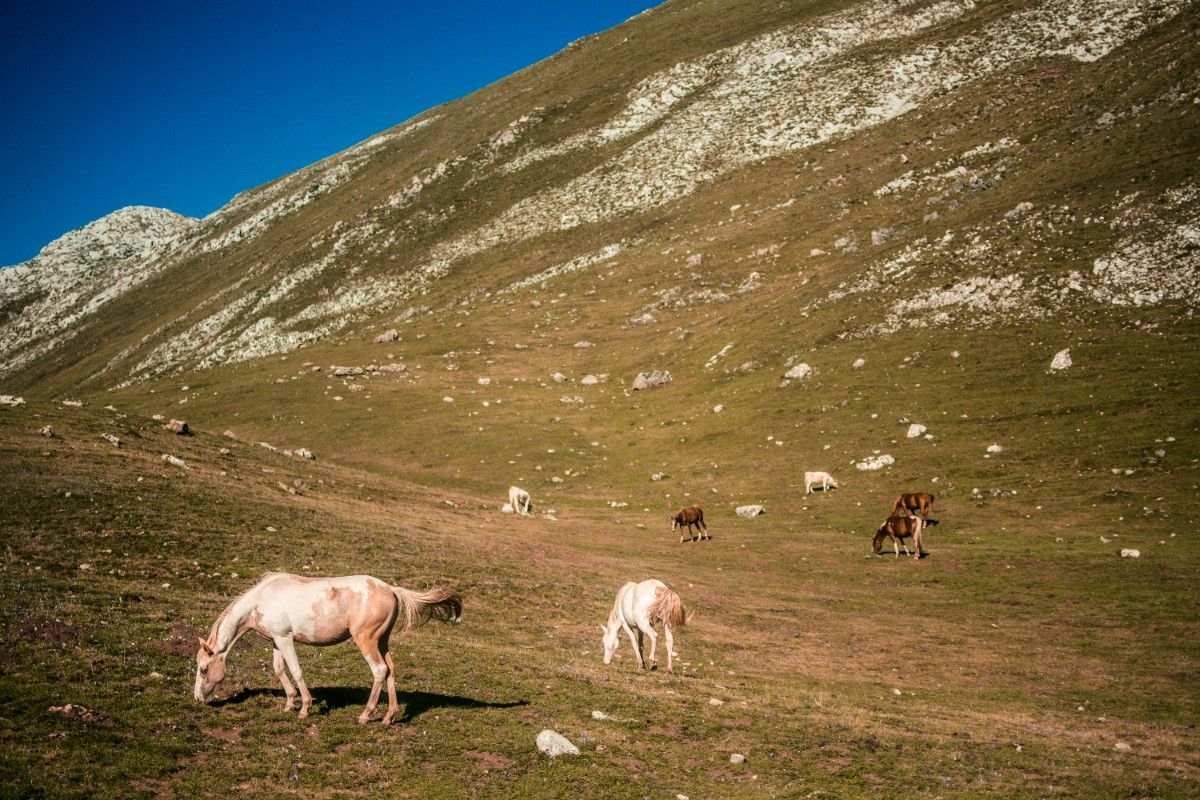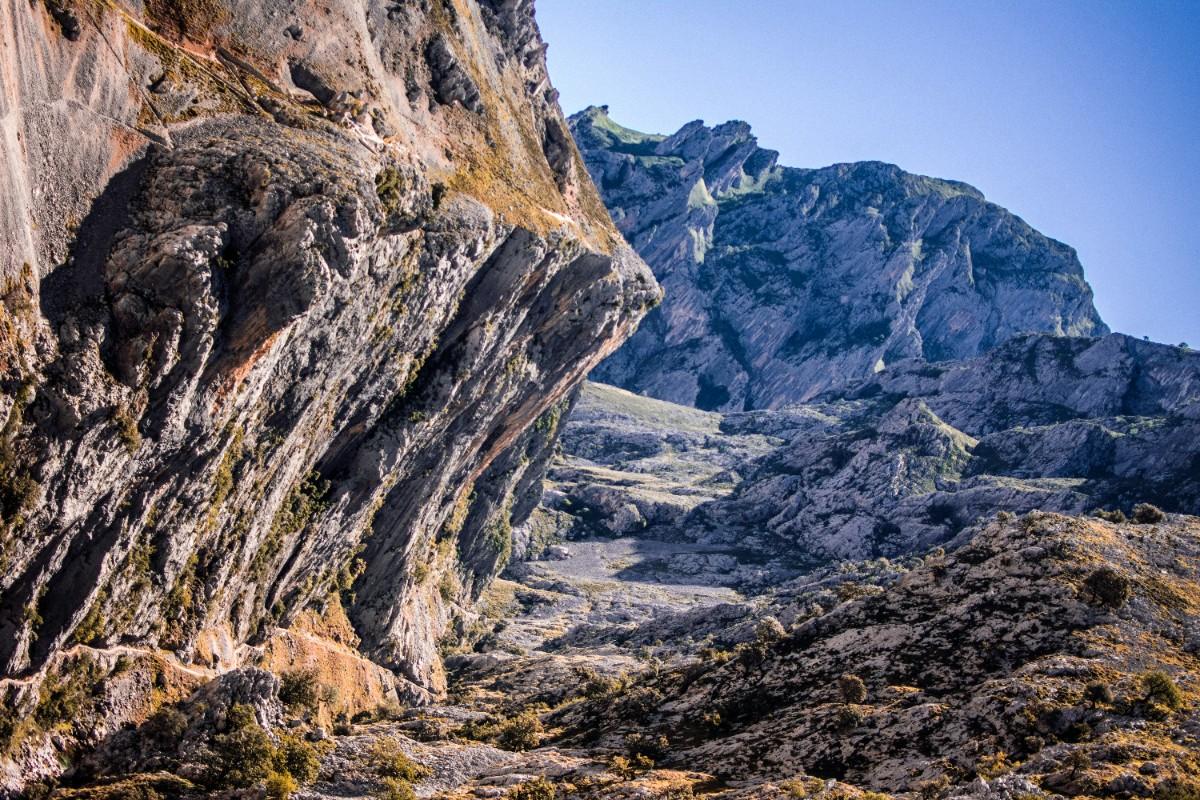Introduction to the Picos de Europa National Park
The Picos de Europa, or "Peaks of Europe," is a breathtaking mountain range located in northern Spain, spanning across the regions of Asturias, Cantabria, and Castilla y León. This magnificent national park, established in 1918, boasts an area of approximately 67,455 hectares, making it the perfect destination for nature enthusiasts, hikers, and campers alike. The Picos de Europa is renowned for its diverse landscapes, featuring towering limestone peaks, deep gorges, lush valleys, and pristine glacial lakes. The park is home to an abundance of flora and fauna, including chamois, Cantabrian brown bears, and the elusive Iberian wolf. With its stunning scenery and rich biodiversity, the Picos de Europa National Park attracts visitors from all over the world, offering an unforgettable experience for those seeking adventure, tranquillity, and a connection with nature.
The Picos de Europa is divided into three main massifs: the Central, Eastern (also known as Ándara), and Western (also known as Picos de Cornión) massifs. Each massif offers unique landscapes and hiking opportunities, catering to various skill levels and interests. The Central Massif is the highest and most popular among visitors, with its iconic Naranjo de Bulnes peak, a mecca for climbers. The Eastern Massif is known for its rugged beauty and remote hiking trails, while the Western Massif offers a mix of challenging routes and more accessible walks. No matter which area you choose to explore, the Picos de Europa promises an awe-inspiring experience that will leave you marvelling at the raw beauty of nature.
Planning Your Trip to the Picos de Europa
When to Visit and Weather Considerations
When planning your trip to the Picos de Europa, it is crucial to consider the weather conditions and the best time to visit. The park experiences a variable mountain climate, with cool summers and cold, snowy winters. The best time to visit for hiking and camping is typically from late spring to early autumn (May to October), when the weather in the Picos de Europa is mild and the trails are accessible.
However, it is essential to keep in mind that the weather in the Picos de Europa can change rapidly, even during the summer months. Visitors should be prepared for sudden rain showers, fog, and chilly temperatures, especially at higher elevations. It is always a good idea to check the weather forecast before setting out on a hike and to pack appropriate gear, such as waterproof jackets, warm layers, and sturdy footwear.
Accommodation Options
When it comes to accommodation, the Picos de Europa offers a range of options to suit different preferences and budgets. For those who prefer a more immersive nature experience, camping is a popular choice. There are several well-equipped campsites throughout the park, such as Camping La Viorna and Camping El Cares, which offer basic facilities like toilets, showers, and electricity.
If you prefer more comfortable accommodation, there are numerous hotels, guesthouses, and mountain refuges scattered throughout the park and in nearby towns. These options range from simple, rustic lodges to more luxurious hotels, such as the Hotel Picos de Europa in Santander. When booking your accommodation, it is essential to consider the proximity to the hiking trails and other attractions you wish to visit, as well as the level of comfort and amenities you require.
Getting to the Picos de Europa
The Picos de Europa National Park is easily accessible by car, bus, or train from major cities in northern Spain, such as Santander, Oviedo, and León. If you are arriving by plane, the nearest airports are Santander Airport (SDR) and Asturias Airport (OVD), both of which are served by domestic and international flights.
Once you arrive in the region, you can reach the park by car or public transportation. If you are driving, there are several main roads that lead to the different entrances of the park, such as the N-621 from León to Posada de Valdeón and the N-625 from Cangas de Onís to Poncebos. If you prefer public transportation, there are regular bus services from nearby towns to popular destinations within the park, such as the Covadonga Lakes and the Fuente Dé cable car station.
Essential Gear and Equipment
To ensure a safe and enjoyable hiking and camping experience in the Picos de Europa, it is important to come prepared with the essential gear and equipment. This includes:
- Sturdy, comfortable hiking boots with good ankle support
- Waterproof and breathable hiking clothing, including a jacket and trousers
- Warm layers, such as a fleece or insulated jacket, for cold temperatures at higher elevations
- A backpack with a rain cover to keep your belongings dry
- A tent, sleeping bag, and sleeping mat if you plan on camping
- A portable stove and cooking equipment if you plan on preparing your own meals
- A map and compass or GPS device for navigation
- A first-aid kit and basic medical supplies
- Sun protection, including sunscreen, sunglasses, and a hat
- A reusable water bottle and water filtration system to stay hydrated on the trails
By carefully planning your trip and packing the necessary gear, you can ensure that you are well-prepared for the adventures that await you in the stunning Picos de Europa National Park.
Exploring the Central Massif
The Iconic Naranjo de Bulnes
The Central Massif of the Picos de Europa is home to the iconic Naranjo de Bulnes peak, also known as Picu Urriellu. Standing at an impressive 2,519 meters above sea level, this distinctive orange limestone tower is a true symbol of the Picos de Europa and a mecca for climbers from around the world. The Naranjo de Bulnes presents a formidable challenge for experienced climbers, with its vertical walls and exposed routes demanding a high level of technical skill and mental fortitude.
For those who prefer to admire the Naranjo de Bulnes from a distance, there are several viewpoints throughout the Central Massif that offer stunning vistas of this iconic peak. One of the best spots to appreciate the grandeur of the Naranjo de Bulnes is from the Mirador de Ordiales, a viewpoint located along the popular Cares Gorge trail. From this vantage point, hikers can marvel at the sheer scale of the peak and the surrounding limestone massif, which is particularly breathtaking at sunrise or sunset when the warm light illuminates the orange rock face.
Hiking the Cares Gorge Trail
The Cares Gorge trail, also known as the "Divine Gorge" or "Garganta Divina," is one of the most popular and spectacular hiking routes in the Picos de Europa. This 12-kilometer linear trail follows a narrow path carved into the steep walls of the Cares Gorge, offering breathtaking views of the river and the surrounding mountains. The trail begins in the picturesque village of Poncebos and ends in the hamlet of Cain, taking approximately 3-4 hours to complete.
As you hike along the Cares Gorge trail, you will pass through tunnels, cross narrow bridges, and traverse rocky outcrops, all while marvelling at the sheer scale of the gorge walls towering above you. The trail is well-maintained and relatively easy to follow, making it suitable for hikers of most skill levels. However, it is essential to exercise caution, as some sections of the path can be narrow and exposed, with steep drop-offs to the river below.
One of the highlights of the Cares Gorge trail is the stunning turquoise colour of the Cares River, which is particularly vibrant on sunny days. The river is fed by the melting snow and glaciers of the surrounding peaks, and its crystal-clear waters are home to a variety of fish and aquatic life. Along the trail, you will also encounter a diverse array of flora and fauna, including rare and endemic species such as the Picos de Europa violet and the Cantabrian chamois.
Exploring the Fuente Dé Cable Car and Surroundings
The Fuente Dé cable car is one of the most popular attractions in the Central Massif of the Picos de Europa. Located in the heart of the massif, this impressive feat of engineering whisks visitors from the valley floor to an altitude of 1,823 meters in just four minutes, offering stunning panoramic views of the surrounding peaks and valleys.
At the top of the cable car station, visitors can enjoy a variety of hiking trails and scenic viewpoints, including the Mirador del Cable, which offers breathtaking vistas of the Picos de Europa and the nearby Liébana Valley. For those seeking a more challenging hike, the ascent to the summit of Peña Vieja (2,613m) is a popular option, rewarding intrepid hikers with unparalleled views of the Central Massif and beyond.
In addition to hiking, the area around the Fuente Dé cable car station is also known for its unique geological features, such as the impressive limestone sinkholes and caves that dot the landscape. One of the most notable examples is the Hoyos Sengros cave system, which consists of a series of interconnected chambers and passages that extend deep into the mountain. While exploring these caves is strictly regulated and requires specialised equipment and expertise, visitors can still appreciate the fascinating geology of the region from the surface.
Discovering the Eastern Massif (Ándara)
Hiking to the Ándara Refuge
The Ándara Refuge is a popular destination for hikers exploring the Eastern Massif of the Picos de Europa. Located at an altitude of 1,667 meters, this mountain refuge offers basic accommodation and serves as an excellent base for discovering the rugged beauty of the surrounding peaks and valleys. The hike to the Ándara Refuge is a challenging 4-hour trek from the village of Bejes, but the stunning views and sense of accomplishment upon reaching the refuge make it well worth the effort.
The trail to the Ándara Refuge winds through dense beech forests, past cascading streams, and over rocky terrain, offering a diverse and captivating landscape that showcases the untamed beauty of the Eastern Massif. As you gain elevation, the views become increasingly spectacular, with the Cantabrian Mountains and the distant Bay of Biscay revealing themselves on the horizon.
Once you reach the Ándara Refuge, you can take a well-deserved rest and enjoy the simple but comfortable amenities, which include bunk beds, a communal dining area, and basic cooking facilities. The refuge is staffed by friendly and knowledgeable wardens who can provide information about the surrounding area and assist with any hiking or safety concerns.
Exploring the Sil River Gorge
The Sil River Gorge is one of the hidden gems of the Eastern Massif, offering a unique and captivating landscape that is often overlooked by visitors to the Picos de Europa. This stunning gorge can be explored via the Ruta del Cares trail, a challenging but rewarding linear route that follows the course of the Sil River as it winds its way through the heart of the massif.
The Ruta del Cares trail is less crowded than its more famous counterpart in the Central Massif, the Cares Gorge trail, making it an ideal choice for those seeking a more peaceful and intimate experience with nature. As you hike along the trail, you will pass through narrow gorges, over ancient stone bridges, and alongside cascading waterfalls, all while marvelling at the sheer scale and beauty of the surrounding limestone cliffs.
One of the highlights of the Sil River Gorge is the Chorco de los Lobos, a magnificent waterfall that plunges over 50 meters into a crystal-clear pool below. The waterfall is particularly impressive after heavy rainfall when the increased water volume creates a thunderous roar that echoes through the gorge. Visitors can admire the waterfall from a viewing platform along the trail or take a refreshing dip in the pool at its base during the warmer months.
Ascending Pico Valdominguero
For experienced hikers seeking a challenging and rewarding adventure in the Eastern Massif, the ascent to the summit of Pico Valdominguero (2,265m) is an excellent option. This demanding hike begins at the Ándara Refuge and involves a steep and rocky climb to the summit, where hikers are rewarded with panoramic views of the Cantabrian Mountains and the distant Bay of Biscay.
The route to the summit of Pico Valdominguero is not for the faint of heart, as it involves some scrambling and exposure to steep drop-offs. However, those with the necessary skills and experience will find the ascent to be an exhilarating and memorable adventure that showcases the rugged beauty of the Eastern Massif.
As you climb higher, the landscape becomes increasingly stark and dramatic, with the lush forests giving way to rocky outcrops and windswept ridges. The final push to the summit involves a steep and exposed scramble, but the sense of accomplishment and the breathtaking views from the top make it all worthwhile.
From the summit of Pico Valdominguero, hikers can enjoy unparalleled vistas of the surrounding peaks and valleys, including the iconic Naranjo de Bulnes in the distant Central Massif. On a clear day, it is even possible to see the shimmering waters of the Bay of Biscay on the horizon, a testament to the incredible scale and beauty of the Picos de Europa.
Uncovering the Western Massif (Picos de Cornión)
The Stunning Covadonga Lakes
The Western Massif, or Picos de Cornión, is home to one of the most iconic and beautiful attractions in the Picos de Europa National Park: the Covadonga Lakes. These glacial lakes, Enol and Ercina, are nestled amidst the towering peaks of the massif and are easily accessible by car or on foot from the nearby town of Covadonga.
The larger of the two lakes, Lake Enol, is a stunning sight to behold, with its crystal-clear turquoise waters reflecting the surrounding mountains and lush vegetation. Visitors can take a leisurely stroll around the lake, enjoying the peaceful atmosphere and breathtaking views. The area around the lake is also home to a variety of hiking trails, ranging from gentle walks to more challenging routes that lead up to the surrounding peaks.
Lake Ercina, although smaller than its neighbour, is no less impressive. This picturesque lake is surrounded by a rugged landscape of limestone cliffs and alpine meadows, which are particularly vibrant with wildflowers during the spring and summer months. Visitors can explore the trails around the lake or simply relax on its shore, taking in the tranquil beauty of the surroundings.
Hiking to the Summit of Peña Santa
For experienced hikers seeking a challenging adventure in the Western Massif, the ascent to the summit of Peña Santa (2,596m) is a must. This demanding hike offers a true test of endurance and skill, rewarding those who reach the top with breathtaking views of the Picos de Europa and the surrounding Cantabrian Mountains.
The route to the summit of Peña Santa begins at the Vegarredonda Refuge, which is situated at an altitude of 1,430 meters and can be reached by a scenic hike from the village of Soto de Sajambre. From the refuge, the trail ascends steeply through a landscape of rocky outcrops and alpine meadows, gradually becoming more challenging as it approaches the base of the peak.
The final ascent to the summit involves a steep and exposed scramble over loose rock and scree, requiring a good head for heights and sure footing. However, those who persevere are rewarded with an unparalleled panorama from the top, with sweeping views of the Western Massif and the distant peaks of the Central and Eastern Massifs.
Exploring the Village of Sotres
Nestled in the heart of the Western Massif, the picturesque village of Sotres is the highest settlement in the Picos de Europa, sitting at an impressive altitude of 1,050 meters. This charming village serves as an excellent base for exploring the surrounding peaks and valleys, offering a range of accommodation options and a glimpse into the traditional way of life in the mountains.
The village itself is a delight to explore, with its narrow cobbled streets, traditional stone houses, and friendly locals. Visitors can wander through the village, admiring the architecture and soaking up the peaceful atmosphere, or stop at one of the local cafes or restaurants to sample some of the delicious regional cuisine.
From Sotres, hikers can embark on a variety of trails that lead into the heart of the Western Massif. One popular route is the hike to the Andara Refuge, which offers stunning views of the surrounding peaks and a chance to explore the remote and rugged landscape of the Andara Valley. Another option is the challenging ascent to the summit of Peña Vieja (2,613m), which rewards hikers with panoramic views of the entire Picos de Europa range.
Flora and Fauna of the Picos de Europa
Diverse Plant Life and Ecosystems
The Picos de Europa National Park is renowned for its incredible diversity of plant life, with over 1,400 species of flora found within its borders. The park's unique combination of limestone geology, varied elevations, and microclimates create a mosaic of habitats that support a wide range of vegetation, from lush forests to alpine meadows and high-altitude rock gardens.
One of the most iconic and emblematic plants of the Picos de Europa is the Picos de Europa violet, a small purple flower that is endemic to the park and found nowhere else in the world. This rare and delicate flower thrives in the high-altitude meadows and rocky crevices of the mountains, adding a splash of colour to the rugged landscape.
Other notable plant species found in the park include the Cantabrian bog-rosemary, a small evergreen shrub that grows in the high-altitude wetlands, and the Picos de Europa geranium, a delicate pink flower that blooms in the rocky outcrops and scree slopes of the massifs.
The forests of the Picos de Europa are equally diverse, with a mix of deciduous and evergreen trees that change with elevation and aspect. At lower elevations, the forests are dominated by oak, chestnut, and beech trees, which create a lush and verdant landscape. As the altitude increases, these forests give way to stands of mountain ash, birch, and Scots pine, which are better adapted to the harsh mountain conditions.
Iconic Animal Species
The Picos de Europa National Park is home to an incredible variety of fauna, including several iconic and emblematic species that are closely associated with the park and the surrounding region. One of the most famous and sought-after animals in the park is the Cantabrian brown bear, a subspecies of the European brown bear that is found only in the Cantabrian Mountains of northern Spain.
Although the Cantabrian brown bear is critically endangered, with only around 300 individuals remaining in the wild, the Picos de Europa is one of the best places to spot these elusive creatures. The park's remote and rugged terrain provides an ideal habitat for the bears, who are known to roam the forests and high-altitude meadows in search of food.
Another iconic species found in the Picos de Europa is the Cantabrian chamois, a small and agile mountain goat that is perfectly adapted to the steep and rocky terrain of the massifs. These sure-footed animals can often be seen grazing on the high-altitude meadows or leaping from rock to rock on the steep cliffs and ridges.
The park is also home to a wide variety of other mammals, including the Iberian wolf, the European wildcat, and the Pyrenean desman, a small aquatic mammal that is found only in the mountain streams and rivers of the Cantabrian Mountains.
Birdwatching in the Picos de Europa
For birdwatchers, the Picos de Europa National Park is a true paradise, with over 100 species of birds recorded within its borders. The park's varied habitats and rugged terrain provide an ideal environment for a wide range of bird species, from majestic birds of prey to colourful songbirds and elusive forest dwellers.
One of the most iconic and impressive birds found in the park is the griffon vulture, a large and powerful raptor that can often be seen soaring on the thermals above the massifs. These birds are known for their impressive size, with a wingspan of up to 2.8 meters, and their distinctive appearance, with a bald head and neck and a ruff of white feathers around the base of the neck.
Other notable bird species found in the Picos de Europa include the golden eagle, the peregrine falcon, and the Eurasian eagle-owl, all of which are top predators in the park's ecosystem. The forests and meadows of the park are also home to a wide variety of smaller birds, such as the Eurasian bullfinch, the European nuthatch, and the coal tit.
Birdwatching in the Picos de Europa is a truly rewarding experience, with the chance to see a wide variety of species in their natural habitats. Whether you are a seasoned birder or simply appreciate the beauty and diversity of the park's avian life, there is always something new and exciting to discover in this incredible mountain wilderness.
Cultural Heritage and Local Communities
Traditional Lifestyles and Customs
The Picos de Europa National Park is not only a natural wonder but also a region steeped in rich cultural heritage and traditional ways of life. The local communities that call this area home have a deep connection to the land and have adapted their lifestyles to the unique challenges and opportunities presented by the mountain environment.
One of the most iconic and traditional practices in the Picos de Europa is transhumance, the seasonal movement of livestock from lower valleys to high-altitude pastures. For centuries, shepherds have driven their flocks of sheep and goats up to the summer grazing grounds, known as "majadas," where the animals can feed on the lush and nutrient-rich grasses and herbs.
This ancient practice has shaped the landscape and ecology of the Picos de Europa, creating a mosaic of open meadows and forest patches that support a wide range of plant and animal species. The shepherds themselves have developed a unique set of skills and knowledge, passed down through generations, that allow them to navigate the rugged terrain and care for their animals in the challenging mountain environment.
Another important aspect of the cultural heritage of the Picos de Europa is the traditional architecture and building techniques that have evolved over centuries to cope with the harsh mountain climate. The villages and hamlets scattered throughout the park are characterised by their stone houses, often with thick walls and small windows to retain heat in the winter and keep the interiors cool in the summer.
Many of these buildings also feature distinctive red-tiled roofs and wooden balconies, which are not only aesthetically pleasing but also functional, providing a space for drying crops and airing bedding. The use of local materials, such as limestone and chestnut wood, further reflects the deep connection between the built environment and the natural landscape of the Picos de Europa.
Local Cuisine and Produce
Food and drink are an integral part of the cultural heritage of the Picos de Europa, with a rich culinary tradition that reflects the local environment and the pastoral way of life. The cuisine of the region is characterised by its use of high-quality, locally-sourced ingredients, many of which are unique to the mountain environment.
One of the most famous and iconic products of the Picos de Europa is Cabrales cheese, a strong and tangy blue cheese that is made from a mix of cow, sheep, and goat milk. This distinctive cheese is aged in natural limestone caves, where the cool and humid conditions promote the growth of the beneficial mould that gives the cheese its characteristic flavour and appearance.
Another important element of the local cuisine is the use of game meats, such as venison and wild boar, which are hunted in the forests and mountains of the Picos de Europa. These meats are often slow-cooked in stews and casseroles, along with locally-grown vegetables and herbs, to create hearty and flavourful dishes that are perfect for sustaining energy in the cold mountain climate.
The Picos de Europa is also known for its production of high-quality honey, which is made from the nectar of the diverse wildflowers that bloom in the mountain meadows. This honey is prized for its unique flavour profile, which varies depending on the specific flowers that the bees have foraged on, and is often used in traditional desserts and pastries.
Visitors to the Picos de Europa can sample these and many other local specialties in the villages and towns throughout the park, where small family-run restaurants and shops offer a taste of the authentic flavours and traditions of the region. By supporting these local businesses, tourists can help to sustain the culinary heritage of the Picos de Europa and contribute to the economic well-being of the communities that call this magnificent landscape home.
Responsible Tourism and Conservation
Sustainable Tourism Practices
As the popularity of the Picos de Europa National Park continues to grow, it is increasingly important for visitors to adopt sustainable and responsible tourism practices that help to preserve the natural and cultural heritage of the region. By following a few simple guidelines, tourists can minimise their impact on the environment and support the long-term conservation of this unique and fragile ecosystem.
One of the most important aspects of responsible tourism in the Picos de Europa is to respect the natural environment and the wildlife that calls it home. This means sticking to designated hiking trails and campsites, and avoiding any activities that could disturb or damage the delicate balance of the ecosystem, such as littering, picking wildflowers, or feeding the animals.
Visitors should also be mindful of their water and energy consumption, particularly in the remote and off-grid areas of the park where resources are limited. Simple actions like turning off lights and electronics when not in use, taking short showers instead of baths, and bringing reusable water bottles and bags can all help to reduce the environmental footprint of tourism in the Picos de Europa.
Another key element of responsible tourism is to support the local economy and communities that depend on the park for their livelihoods. By choosing to stay in locally-owned accommodations, eating at family-run restaurants, and purchasing souvenirs and crafts from local artisans, visitors can help to ensure that the benefits of tourism are distributed fairly and sustainably throughout the region.
Conservation Efforts and Challenges
The Picos de Europa National Park is home to an incredible diversity of plant and animal species, many of which are found nowhere else in the world. However, this unique and fragile ecosystem is also facing a range of challenges and threats, from climate change and habitat loss to overgrazing and unsustainable tourism practices.
To address these challenges and ensure the long-term conservation of the park's natural and cultural heritage, a range of efforts and initiatives have been put in place by the park authorities, local communities, and conservation organisations. These include monitoring and research programs to better understand the ecology and dynamics of the park's ecosystems, as well as targeted conservation actions to protect specific species and habitats.
One of the most important conservation efforts in the Picos de Europa is the management of the park's livestock populations, particularly the traditional transhumance practices that have shaped the landscape for centuries. By working with local farmers and shepherds to promote sustainable grazing practices and reduce overgrazing, the park authorities are helping to maintain the delicate balance between the needs of the local communities and the health of the ecosystem.
Another key challenge facing the Picos de Europa is the impact of climate change, which is already affecting the park's ecosystems and species in a variety of ways. Rising temperatures, changing precipitation patterns, and more frequent extreme weather events are all taking their toll on the delicate balance of the mountain environment, and require urgent action to mitigate and adapt to these impacts.
How Visitors Can Contribute
Visitors to the Picos de Europa National Park can play an important role in supporting the conservation and sustainable development of this unique and precious landscape. By adopting responsible tourism practices and contributing to local conservation efforts, tourists can help to ensure that the park remains a thriving and resilient ecosystem for generations to come.
One of the most direct ways that visitors can contribute to conservation in the Picos de Europa is by volunteering their time and skills to support ongoing research and monitoring programs. Many of these programs rely on citizen science and volunteer efforts to collect data and carry out essential tasks, such as surveying wildlife populations, monitoring water quality, and restoring degraded habitats.
Visitors can also support conservation efforts by donating to local conservation organisations and initiatives, such as the Fundación para la Conservación del Quebrantahuesos (Foundation for the Conservation of the Bearded Vulture) or the Fundación Oso Pardo (Brown Bear Foundation). These organisations work tirelessly to protect and restore the unique species and ecosystems of the Picos de Europa, and rely on the generosity and support of visitors and locals alike.
Finally, perhaps the most important way that visitors can contribute to the conservation of the Picos de Europa is simply by being mindful and respectful of the natural and cultural heritage of the region. By following the principles of responsible tourism, and by sharing their experiences and insights with others, visitors can help to raise awareness and build support for the ongoing efforts to protect and preserve this incredible mountain wilderness for future generations to enjoy and cherish.
Related Articles

Let us know you agree to cookies
We use marketing, analytical and functional cookies as well as similar technologies to give you the best experience. Third parties, including social media platforms, often place tracking cookies on our site to show you personalised adverts outside of our website.
We store your cookie preferences for two years and you can edit your preferences via ‘manage cookies’ or through the cookie policy at the bottom of every page. For more information, please see our cookie policy.
